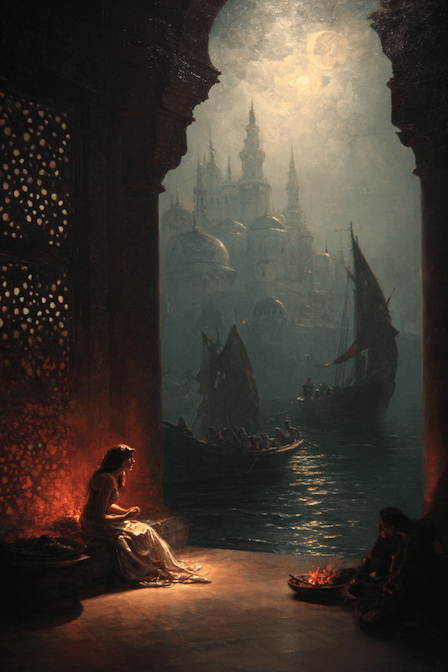One Thousand and One Nights
Also known as: The Thousand and One Nights, Arabian Nights, Alf Layla wa-Layla


A medieval Arabic frame-tale cycle in which Shahrazad tells stories over successive nights to postpone execution, weaving together romances, adventures, fables, and marvels across the Islamic world and beyond.
Description
The Nights is an evolving Arabic compilation whose frame narrative—Shahrazad narrating to King Shahryar—binds a vast mosaic of stories. Many episodes derive from earlier Persian and Indian materials, adapted by Arabic storytellers and scribes into forms reflecting urban life, trade networks, courtly intrigue, and religious-moral reflection. Syrian and Egyptian recensions preserve overlapping but distinct corpora, to which later transmitters added further tales. Famous cycles such as the Seven Voyages of Sinbad, alongside romances, jinn encounters, courtroom riddles, and trickster comedies, showcase narrative art that prizes wit, eloquence, and prudence. The collection’s open, accretive nature resists a single canonical text while exemplifying a living story tradition shaped by performance and manuscript culture.
Historiography
The work survives through multiple manuscript families, notably Syrian and Egyptian recensions, with significant variation in tale order and inclusion. Early printed editions include the Būlāq (Cairo, 1835) and Calcutta (1839–1842) sets, which influenced later European translations. Antoine Galland’s early-18th-century French version popularized the corpus in Europe and introduced tales like Aladdin and Ali Baba from oral informants. Modern critical work (e.g., on the Galland manuscript and medieval Arabic witnesses) emphasizes the composite, layered transmission and the instability of a fixed canon.
Date Notes
Origins in Persian and Indian tale traditions (e.g., Hezar Afsaneh, Panchatantra) adapted into Arabic; principal Syrian and Egyptian recensions stabilized late medieval period.
Symbols
Major Characters
- Shahrazad
- King Shahryar
- Dinarzad
- Aladdin
- Ali Baba
- Sinbad
- Jafar
Myths
- The Frame of Shahrazad
- The Fisherman and the Jinni
- Ali Baba and the Forty Thieves
- Aladdin and the Magic Lamp
- The Seven Voyages of Sinbad
- The Tale of the Hunchback
Facts
- The Nights is a frame narrative that organizes diverse tales through Shahrazad’s nightly storytelling.
- Core Arabic recensions are Syrian and Egyptian, each preserving different selections and orderings.
- Famous tales like Aladdin and Ali Baba entered European circulation via Galland’s early-18th-century sources.
- Early Arabic printings include the Būlāq (Cairo, 1835) and Calcutta (1839–1842) editions.
- The corpus blends urban anecdotes, romances, travel adventures, animal fables, and jinn lore.
- The collection’s open, accretive transmission means there is no single canonical table of contents.
- Sinbad’s voyages form a self-contained adventure cycle embedded within the larger collection.
- Modern translations often rely on specific medieval witnesses or reconstructed critical texts.